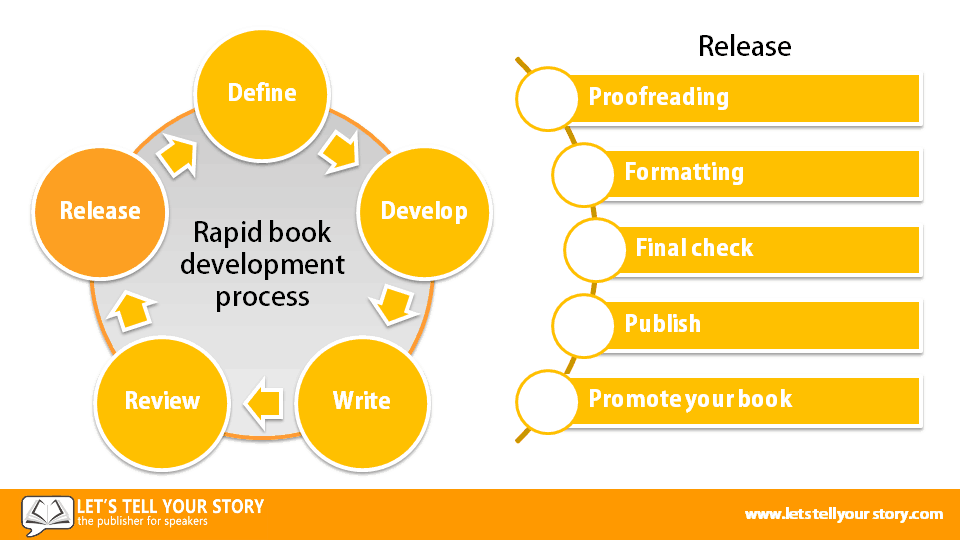
Proofreading
This is where the dreaded proofreading kicks in. If you’re like me, you’re probably not terribly fond of proofreading (There’s tens of thousands of words on this site, and I do all the edits myself …..) I’m afraid the bad news is you can’t avoid it. It has to happen at this stage.
Once you have reviewed your book and your draft is stable, and you have made all the improvements to make your draft as good as it can be, it’s time to make sure it’s perfect.
Keep it simple and check for one problem in turn. For example, do a run through for
- punctuation errors
- spelling errors
- factual errors – for example every data chart quotes the correct source for the statistics
- consistency errors – for example, do all your abbreviations have dots after the letters or not, they need to be consistently styled throughout
Try not to read your text – you’ll skim and miss errors. Avoid skimming by reading in reverse. Start at the last word on the page and work back to the first.
Formatting
Next, double-check the formatting and make sure that’s perfect too.
Perfect formatting means
- it’s consistently applied throughout the book
- your material is easy to read
- headings are always directly above their associated, explanatory text, and not left separate at the bottom of a page
- there is no mis-aligned information like wide tables falling off the end of the page
- all your bullet points indent to the correct levels and have the right shape or numbering sequence assigned to each item
- all your captions that accompany your images or tables appear in the same place, either above or below, and are aligned the same way
The secret to this check is to focus on consistency and being eagle-eyed.
It’s like the biggest game of spot the difference you’ve ever played your life.
You must spot any formatting differences on each and every page in your book and correct them.
Final check
Once you have proofread and formatted your book, give it another light check.
Make sure nothing untoward happened during your formatting. For example, you might have selected a word intending to make it bold, but accidentally deleted or overwrote the selection instead.
You’ll need to do some visualisation at this point to imagine how your final book will look. Checking it on screen is never quite the same as checking a physical printed copy.
Consider printing out your final draft and checking that. Remember, it’s likely the paper size will be different so there will be large blank margins around each book-sized page.
It’s more difficult to turn over those loose, “home-printed” pages compared with a smaller, physical bound book, making it a little more difficult to check how it “flows”.
Still, a printout is helpful, even if it’s not quite the same. Do the best you can.
Publish
The next step is to get your proof copy printed. I recommend you have one copy printed to start with and check that thoroughly.
You might have seen you can have business cards, mugs and T-shirts printed online. There are companies offering book printing too.
You’ll need to upload your book in Word or PDF format. You’ll also need to upload your cover art. If you haven’t had a graphic designer create a cover, you can use the printer’s cover design tool
Check out Lulu.com and Amazon KDP for getting a print done.
(I recommend you have a professional cover designed – people do judge books by their cover. Don’t undermine your efforts with a lacklustre design).
Check your proof copy is of a good enough standard to go out with your name on it.
If any lingering issues have slipped through the net, don’t beat yourself up. Relax, take your time and fix them. Then, order another proof copy.
With print on demand publishers, you don’t have to order a massive run of 500 copies and have them living under the stairs for a long time. The cost of getting a single copy printed is very reasonable – about £3 or $5 plus shipping.
Once you’re happy with your proof copy, I recommend you order perhaps 20 or 30 copies each time just keep postage costs down. The difference in shipping price between getting a single copy on express delivery and posting a batch of 20 on regular delivery is minimal.
Promote your book
Once you have access to printed copies of your book, you need to promote your book.
The easiest way to do that is to create a promotional pack. Share this tool with other people, such as journalists, to get your “book message” out there.
Your pack includes useful information like your author biography, which explains about
- your expertise and background
- why you wrote the book
- how it helps readers
In addition, you can include book synopses (or “summaries”), so it’s easy for others to explain the benefits of your book to their audience.
You could gather a list of powerful tips from your book into a short document. These tips can be quickly be turned into features by someone else.
In return, they tell their readers, podcast listeners or video viewers where they can buy your book and find out more. It saves them the hassle of creating fresh content themselves.
These are just a few of the ways you can use your press pack to promote you and your book in a professional way. (I have written a complete book on how to promote yourself as an author and your book called “Launch your book” which is available on Amazon.)

